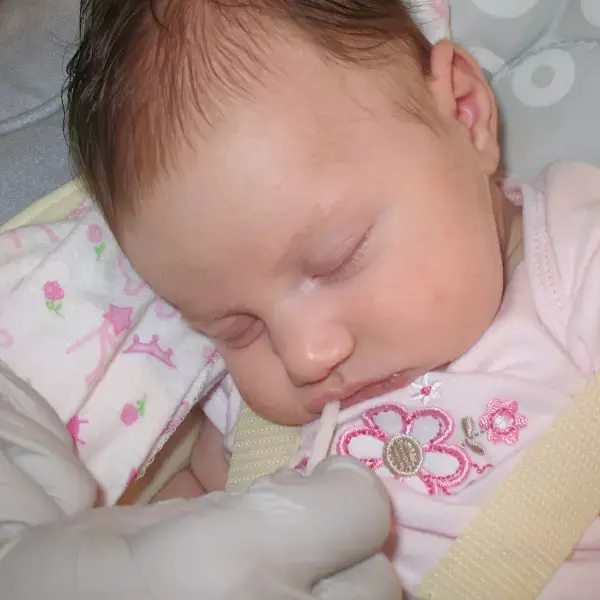- Home
- Medical news & Guidelines
- Anesthesiology
- Cardiology and CTVS
- Critical Care
- Dentistry
- Dermatology
- Diabetes and Endocrinology
- ENT
- Gastroenterology
- Medicine
- Nephrology
- Neurology
- Obstretics-Gynaecology
- Oncology
- Ophthalmology
- Orthopaedics
- Pediatrics-Neonatology
- Psychiatry
- Pulmonology
- Radiology
- Surgery
- Urology
- Laboratory Medicine
- Diet
- Nursing
- Paramedical
- Physiotherapy
- Health news
- Fact Check
- Bone Health Fact Check
- Brain Health Fact Check
- Cancer Related Fact Check
- Child Care Fact Check
- Dental and oral health fact check
- Diabetes and metabolic health fact check
- Diet and Nutrition Fact Check
- Eye and ENT Care Fact Check
- Fitness fact check
- Gut health fact check
- Heart health fact check
- Kidney health fact check
- Medical education fact check
- Men's health fact check
- Respiratory fact check
- Skin and hair care fact check
- Vaccine and Immunization fact check
- Women's health fact check
- AYUSH
- State News
- Andaman and Nicobar Islands
- Andhra Pradesh
- Arunachal Pradesh
- Assam
- Bihar
- Chandigarh
- Chattisgarh
- Dadra and Nagar Haveli
- Daman and Diu
- Delhi
- Goa
- Gujarat
- Haryana
- Himachal Pradesh
- Jammu & Kashmir
- Jharkhand
- Karnataka
- Kerala
- Ladakh
- Lakshadweep
- Madhya Pradesh
- Maharashtra
- Manipur
- Meghalaya
- Mizoram
- Nagaland
- Odisha
- Puducherry
- Punjab
- Rajasthan
- Sikkim
- Tamil Nadu
- Telangana
- Tripura
- Uttar Pradesh
- Uttrakhand
- West Bengal
- Medical Education
- Industry
Salivary CRP may be a useful alternative biomarker of neonatal sepsis: Study

Though blood culture is the gold standard for diagnosis of neonatal sepsis, various biomarkers such as CRP,neutrophil count are used for rapid supportive diagnosis. Considering the difficulty with phlebotomy in neonates ,alternative fluids like saliva could serve as an attractive non-invasive option for detection of CRP.
Researchers from Chettinad Hospital,Tamil Nadu, India conducted a study to correlate serum and salivary CRP. The findings of the study were published in latest edition of Indian Pediatrics journal.
In this prospective cross-sectional study a total of 136 neonates with clinical suspicion of neonatal sepsis or with perinatal risk factors of sepsis, were included in the final analysis. Neonates were then further classified into three groups: Group I – blood culture and sepsis-screen positive sepsis, Group II – blood culture negative but sepsis screen positive (serum CRP ≥10 mg/L and one additional parameter - neutropenia based on standardized age based charts or immature: total neutrophil ratios > 0.2), and Group III - only clinical features or perinatal risk factors. Antibiotics were started only after collection of serum and salivary sample.
Key findings of the study are-
-Early onset sepsis (≤3 days) was seen in 88 (64.7%) of the participants. Salivary CRP was detectable in 135 (99%) neonates and the levels increased significantly from Group III to Group I neonates.
-From the analysis researchers observed that there was a statistically significant positive correlation between salivary and serum CRP values in the entire study population (r=0.63; P =0.01) and in Group I (r=0.63; P =0.01) and Group II neonates (r =0.5; P =0.01).
-Salivary CRP had a good predictive validity as indicated by the area under the ROC curve for salivary CRP to predict serum CRP ≥10 mg/L was 0.861 (95% CI, 0.78 - 0.94, P<0.001).
-An increase in salivary CRP was seen in median (IQR) levels from 0.25 (0.13,0.3) ng/mL in clinical sepsis group to 0.6 (0.3,1.4) ng/mL in screen positive/ blood culture negative group, and to 1.98 (0.54, 2.95) ng/mL in blood culture positive group.
Authors conclude-"saliva could serve as an attractive non-invasive option for detection of CRP and salivary CRP could be used as an alternative biomarker for neonatal sepsis as it increases in septic neonates and positively correlates with serum CRP.
Source: Datla S, Kitchanan S, Sethuraman G. Diagnostic Reliability of Salivary C-Reactive Protein as an Alternative Noninvasive Biomarker of Neonatal Sepsis. Indian Pediatr. 2021 Jan 28:S097475591600284.
Dr Kamal Kant Kohli-MBBS, DTCD- a chest specialist with more than 30 years of practice and a flair for writing clinical articles, Dr Kamal Kant Kohli joined Medical Dialogues as a Chief Editor of Medical News. Besides writing articles, as an editor, he proofreads and verifies all the medical content published on Medical Dialogues including those coming from journals, studies,medical conferences,guidelines etc. Email: drkohli@medicaldialogues.in. Contact no. 011-43720751


